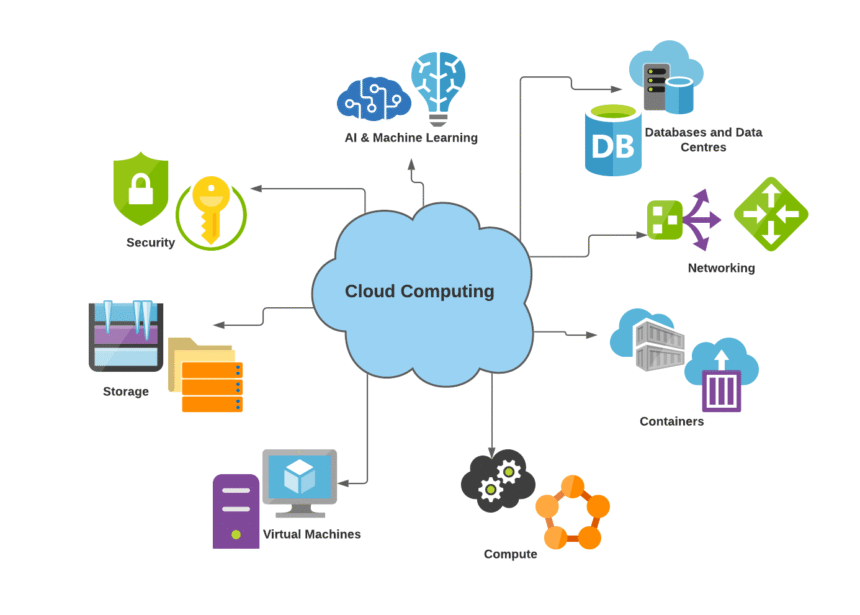Introduction
In an era where cloud computing has become the backbone of modern business operations, protecting your digital assets is no longer optional—it is imperative. From multinational enterprises to small startups, organizations rely on cloud services to store sensitive data, run mission-critical applications, and deliver services at scale. Yet with convenience comes risk: data breaches, unauthorized access, and service interruptions can undermine trust, incur steep financial penalties, and damage reputations irreparably.
This post dives deep into proven strategies and best practices that will help you secure your digital assets in the cloud, safeguarding your organization’s confidentiality, integrity, and availability.
Understanding the Importance of Cloud Security
Cloud adoption has skyrocketed over the past decade as companies seek agility, scalability, and cost efficiencies. Yet this rapid migration to cloud platforms has expanded the attack surface, giving threat actors new opportunities to target misconfigurations, exploit vulnerabilities, and intercept unencrypted data. Achieving robust cloud security is not merely about selecting a reputable provider; you must also implement a comprehensive security architecture that spans identity management, network controls, encryption, monitoring, and incident response.
Cloud security mistakes can be costly. Incidents such as misconfigured storage buckets or exposed APIs can lead to data leaks affecting millions of records. Beyond direct remediation costs, breach notifications, regulatory fines, and lost business can total millions of dollars. Conversely, a mature cloud security posture builds customer trust, streamlines compliance, and positions your organization to innovate confidently in the cloud.
Identifying and Classifying Your Digital Assets
Before applying security controls, you must inventory and classify all digital assets residing in the cloud. These assets generally fall into three categories:
- Data and Intellectual Property: Customer records, financial information, proprietary algorithms, research data, and more.
- Applications and Services: Web applications, microservices, containerized workloads, and serverless functions.
- Credentials and Access Keys: API keys, user credentials, service accounts, and encryption keys.
A granular classification framework enables you to assign appropriate security controls and access policies according to sensitivity. Tagging resources with metadata—such as “public,” “internal,” and “restricted”—facilitates automation of security policies and accelerates incident investigations.
Core Principles of Cloud Security
Every cloud security strategy should rest upon three foundational pillars:
- Confidentiality: Ensuring that only authorized entities can access sensitive data.
- Integrity: Protecting data and systems from unauthorized alteration.
- Availability: Guaranteeing that users and applications have reliable access to resources when needed.
Equally crucial is understanding the Shared Responsibility Model adopted by all major cloud providers. While providers secure the underlying infrastructure (physical data centers, hypervisors, etc.), you retain accountability for securing data in transit, configuring services securely, and managing user identities and permissions.
Best Practices for Cloud Security
Secure Configuration and Hardening
Misconfigurations represent one of the leading root causes of cloud breaches. To mitigate this risk:
- Implement Infrastructure-as-Code (IaC): Define and enforce configurations through code templates (e.g., AWS CloudFormation, Terraform). Version control your templates to maintain change histories and enable rollbacks.
- Enforce Baseline Security Standards: Develop golden images for virtual machines and containers that include only essential services and hardened configurations aligned with benchmarks such as CIS (Center for Internet Security).
- Automated Compliance Scanning: Use tools like AWS Config, Azure Security Center, or third-party solutions (e.g., Prisma Cloud, Aqua Security) to continuously scan for deviations from security baselines.
Identity and Access Management (IAM)
IAM is the linchpin of cloud security. Without strict identity controls, unauthorized users or compromised credentials can wreak havoc:
- Principle of Least Privilege: Grant users and services only the permissions absolutely necessary for their roles. Regularly audit IAM policies to detect over-privileged accounts.
- Multi-Factor Authentication (MFA): Enforce MFA for all privileged accounts, including administrators and service accounts.
- Role-Based Access Controls (RBAC): Group users into roles aligned with job functions, simplifying permission management and reducing the risk of human error.
Encryption Strategies
Protecting data at rest and in transit is non-negotiable:
- Data-in-Transit: Use TLS 1.2 or higher for all service-to-service and client-to-service communications. Enforce HTTPS and disable legacy protocols.
- Data-at-Rest: Leverage cloud provider managed encryption solutions (e.g., AWS KMS, Azure Key Vault, Google Cloud KMS) to encrypt storage volumes, databases, and object storage buckets.
- Bring Your Own Key (BYOK): For heightened control, manage your own keys and rotate them on a regular schedule. Implement strict access policies to your key management service.
Network Security Controls
Logical network segmentation and controls limit exposure:
- Virtual Private Clouds (VPCs): Design VPCs with public and private subnets. Place sensitive workloads in private subnets with no direct internet access.
- Security Groups and Network ACLs: Implement stateful security groups and stateless network ACLs to restrict traffic based on IP ranges, ports, and protocols.
- Web Application Firewalls (WAF): Deploy WAFs to inspect HTTP/S traffic, block known attack patterns such as SQL injection or cross-site scripting, and provide DDoS mitigation.
Monitoring and Logging
Visibility is key to detecting threats early:
- Centralized Logging: Aggregate logs from cloud services, applications, and operating systems into a centralized log management system (e.g., ELK Stack, Splunk, or cloud-native solutions like Amazon CloudWatch Logs, Azure Monitor).
- Security Information and Event Management (SIEM): Correlate events across sources to identify suspicious activity patterns. Configure alerts for anomalies such as unusual login times or data exfiltration attempts.
- Continuous Monitoring: Employ tools that provide real-time security posture assessments and threat detection, enabling you to respond before an incident escalates.
Incident Response Planning
A well-rehearsed incident response plan minimizes downtime and data loss:
- Define Roles and Responsibilities: Establish a cross-functional incident response team including security, IT operations, legal, and communications.
- Run Tabletop Exercises: Regularly simulate breach scenarios to validate processes, tools, and communications flows.
- Automate Playbooks: Use automation tools (e.g., AWS Lambda, Azure Logic Apps) to execute containment actions swiftly, such as isolating compromised instances or revoking credentials.
Advanced Security Measures
Zero Trust Architecture
Zero Trust shifts the security paradigm from perimeter defense to continuous verification:
- Verify Every Request: Authenticate and authorize every connection—whether inside or outside your network perimeter.
- Micro-segmentation: Break your network into granular segments and enforce strict policies for east-west traffic.
- Device and User Posture: Incorporate endpoint compliance checks and user behavior analytics before granting access to resources.
Secure DevOps (DevSecOps)
Integrate security into your development lifecycle:
- Shift Left Security: Embed security tests—such as static application security testing (SAST) and software composition analysis (SCA)—early in your CI/CD pipelines.
- Container Security: Scan container images for vulnerabilities before deployment and use runtime protection to detect anomalous behavior.
- Infrastructure Testing: Implement automated IaC testing frameworks to validate security rules and detect drift before provisioning.
AI and Machine Learning in Security
Leverage advanced analytics to stay ahead of threats:
- Anomaly Detection: Use machine learning models to establish baselines and surface deviations that manual rules might miss.
- Automated Response: Integrate AI-driven playbooks that can automatically quarantine infected resources or throttle suspicious traffic.
Compliance and Legal Considerations
Operating in the cloud requires adherence to regulatory frameworks:
- GDPR, HIPAA, PCI DSS: Determine which regulations apply to your data and workloads, and map their controls to cloud services.
- Data Residency and Sovereignty: Ensure data storage and processing locations comply with local regulations regarding cross-border data flows.
- Auditing and Reporting: Use built-in audit trails and reporting tools provided by your cloud provider to demonstrate compliance.
Choosing the Right Cloud Security Tools and Providers
Selecting solutions that integrate seamlessly with your cloud environment streamlines operations:
- Cloud Access Security Brokers (CASBs): Provide visibility into shadow IT, enforce data loss prevention policies, and offer policy-based encryption for SaaS applications.
- Security Information and Event Management (SIEM): Choose SIEMs with native cloud connectors to reduce integration overhead.
- Cloud-Native vs. Third-Party: Balance the ease of managed, cloud-native services with specialized third-party tools when you require advanced capabilities not offered by your provider.
Building a Culture of Security
Technical controls alone cannot guarantee security; people and processes are equally vital:
- Employee Training and Awareness: Conduct regular security awareness sessions covering phishing, password hygiene, and cloud best practices.
- Security Policies and Governance: Document clear policies for acceptable use, data classification, and incident escalation. Review and update policies periodically to reflect evolving threats and business needs.
- Executive Support: Secure buy-in from leadership by quantifying the business impact of cloud security investments, such as reduced breach costs and enhanced customer trust.
Future Trends in Cloud Security
The cloud security landscape is ever-evolving. Anticipate and prepare for:
- Emerging Threats: Advanced persistent threats targeting supply chains, container image repositories, and infrastructure APIs.
- Innovations in Defense: Development of more sophisticated behavioral analytics, hardware-based root of trust solutions, and decentralized identity frameworks.
Conclusion
Securing your digital assets in the cloud demands a holistic approach that blends robust technical controls with vigilant processes and an empowered workforce. By adhering to best practices—such as enforcing least-privilege access, encrypting data comprehensively, automating security checks, and fostering a security-first culture—you can mitigate risks and confidently harness the transformative power of cloud computing. Remember, cloud security is not a one-time project but a continuous journey. Regularly reassess your security posture, embrace emerging technologies, and remain agile to stay one step ahead of adversaries. Your organization’s resilience, reputation, and competitive edge depend on it.

